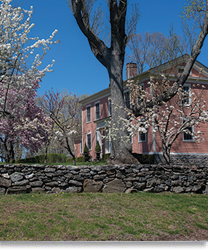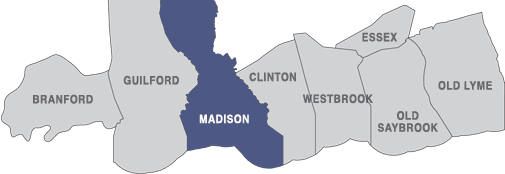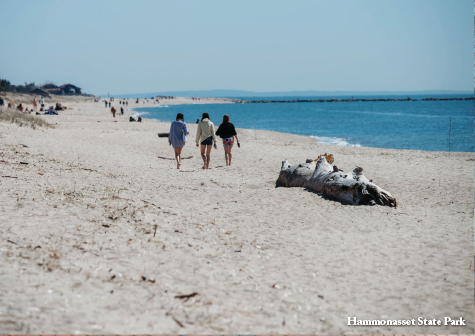Situated between The Shoreline’s East and Hammonasset rivers, Madison’s official narrative began in July of 1639, when English settlers arrived at the Quinnipiac Colony and, led by the Reverend Henry Whitfield, began planning a new community on land they would soon purchase from the Pequot, Menunketuck, Hammonasset, and Mohegan Indians. The price? An assortment of clothing, tools, household utensils, and wampum. From that point forward, however, things took a few twists and turns, when Mohegan Chief Uncas had second thoughts about the quality of that deal. Chief Uncas asked that the land between the East River and the Hammonasset River be repurchased at an enhanced price, and thanks to local Parliamentarian George Fenwick, an early member of the Old Saybrook Colony, it was.
By 1656, a settlement was finally established as a parish of Guilford and the acreage divided among 48 families who promptly named their new town East Guilford. Eventually, they petitioned to build their own meetinghouse where they could hold their own church services, and in 1703, their petition was approved. The new meetinghouse was completed in 1707, and in May of 1826, East Guilford became a separate town, at long last taking as its new name Madison to honor John Madison, one of America’s Founding Fathers. Over the next 250 years, Madison remained largely agricultural, with some industries such as shipbuilding, charcoal production, and milling. However, in the late 19th century, it became mostly residential — and while its beautiful beaches have certainly garnered Madison more than a little renown as a wonderful resort town, it remains primarily residential, with very fine schools, a comfortable level of affluence, and close ties to the nautical and maritime history of the Sound. And why not? Madison is at heart a splendid small town. Usually referred to as downtown by residents, the portion of Boston Post Road that lies between Britton Lane on the west and Scotland Road to the east is a cheerful hub of commerce, culture, and entertainment. This mile-long corridor on Route 1 includes the town’s charming Colonial green; R.J. Julia Booksellers, one of the nation’s finest independent bookstores; the Madison Art Cinemas, a restored double-screen movie house; the public library, firehouse, and post office; an ice cream parlor and bakery; the Madison Wine Exchange; several coffee shops, including the quintessentially old-time Madison Coffee House; some great restaurants, like Café Allegre and RJ Café & Bistro; and an intriguing string of retail shops. Susan Powell Fine Art is a good place to find original, high quality fine art. They can help you start and enrich your collection. And the Madison Mile — a changing exhibition of outdoor sculpture scattered throughout the town center — is always a delightful adventure. Eastward from Main Street, the Boston Post Road heads toward Hammonasset Beach State Park, the longest public beach on Connecticut’s coastline. The park itself comprises a wonderful beach, a boardwalk, Meigs Point Nature Center, and a campground — drawing more annual visitors than any other park in the state. And near the entrance, seafood favorites like Lenny & Joe’s Fish Tale and Donahue’s Clam Castle ensure that no one goes home hungry after a day of fun. Extending northward nearly 15 miles to the border of Durham is the portion of Madison that is primarily rural and residential, with development limited by such protected space as the Cockaponset State Forest, the town-owned Rockland Preserve, and the 1,600 acres under the stewardship of the Madison Land Conservation Trust. And Madison offers four town beaches for public use, along with several coastal access areas, including the neighborhoods on Seaview Avenue, Middle Beach Road, and Neck Road, which are filled with year-round and seasonal cottages, ensuring the availability of summer must-haves like sailboards and sea kayak rentals. Nearby woodlands, wetlands, and marshlands are among the most tranquil and undisturbed habitats in the state, and the residents, who cherish the beauty of this lovely town, work hard to keep it that way. Jennifer Cardinal Photo |












































